
Glass is an amorphous inorganic non-metallic material formed by the cooling and solidification of melt, and its main component is silica (SiO₂), which has the characteristics of transparency, hardness, corrosion resistance, electrical insulation, etc., but the texture is brittle.
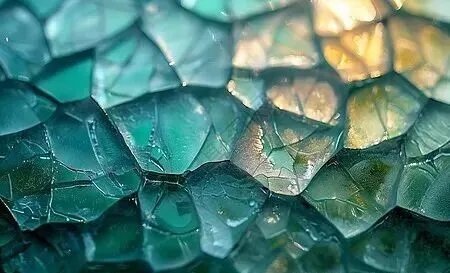
2. Classification ★ of glass
1. Ordinary flat glass
Characteristics and uses: It is a relatively common type of glass, with a certain light transmittance, and is widely used in doors and windows of ordinary buildings, indoor partitions, and industrial products with low requirements for optical performance. For example, in the window installation of ordinary houses, ordinary flat glass is used in large quantities.
2. Tempered glass
Characteristics and uses: After special heat treatment process, the strength is greatly improved, which is several times that of ordinary glass, and it is obtuse and small particles after crushing, which is highly safe.
3. Laminated glass
Characteristics and uses: It is made of one or more layers of organic polymer interlayer between two or more pieces of glass, bonded by a special process. It has good impact resistance, sound insulation and safety performance, even if the glass is broken, the fragments will be stuck by the interlayer, and will not splash and hurt people.
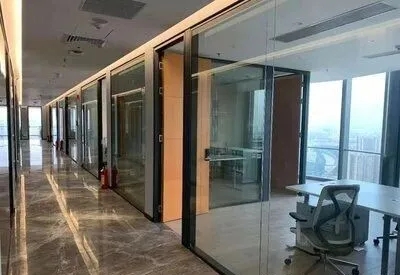
4. Insulating glass
Characteristics and uses: composed of two or more layers of flat glass, surrounded by high-strength and high-airtightness composite binder, two or more pieces of glass are bonded and sealed with sealing strips and glass strips, and the middle is filled with dry gas. It has excellent thermal insulation, thermal insulation and sound insulation performance, which can effectively reduce the energy consumption of buildings. It is widely used in energy-saving doors, windows and curtain wall projects of modern buildings.
5. Special glass
(1) Fireproof glass: It can maintain its integrity and thermal insulation within the specified time, which can effectively prevent the spread of fire and smoke, and is mostly used in fire partitions, firewalls, fireproof doors and windows and other parts of the building to ensure the safety of personnel and minimize property losses.
(2) Low-E glass: that is, low-emissivity glass, which has a high reflection ratio to far-infrared rays, can effectively block heat transfer, while maintaining good light transmission, while reducing building energy consumption, providing a comfortable indoor lighting environment, often used in high-end buildings and places with high requirements for energy saving
3. The origin ★ of glass
1. China: The world's largest glass producer, accounting for more than half of the world's output. It has a complete industrial chain, from ordinary architectural glass to high-end electronic glass
The main production areas are concentrated in Hebei, Shandong, Guangdong, Jiangsu and other major industrial provinces. Shahe, Hebei: Known as "China's Glass City", it is one of the world's largest flat glass production bases
2. Europe: A traditional glass powerhouse, known for its high quality and technological innovation
3. Germany: owns Schott AG, It is a global leader in high-end specialty glasses (such as pharmaceutical, optical, and aerospace glass).
4. France and Italy: have a prominent position in the field of high-end art glass, utensils and automotive glass.
5. United States: It is the main studentProducer and consumer, Corning Incorporated is the world's absolute giant in specialty glass such as Gorilla Glass, fiber optics, and life science appliances.
6. Japan: Famous for its precision technology and high quality. Asahi Glass (AGC), Japan Plate Glass (NSG) and other companies are important suppliers in the fields of automotive glass, display glass, etc.
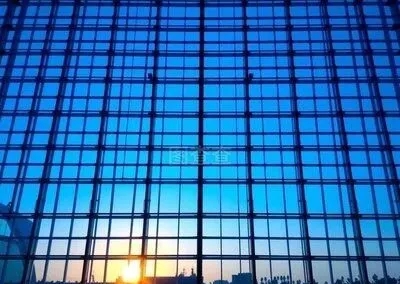
4. Factors ★ affecting glass prices
1. Upstream costs (core drivers)
The cost of glass production is the basic support of price, and the price of raw materials and energy directly determines the cost:
(1) Raw materials: quartz sand (accounting for 50% of raw material costs) and soda ash (accounting for 30% of raw material costs) are the core raw materials, and price fluctuations of the two will directly push up production costs; Changes in the prices of other auxiliary raw materials (such as coating materials) will also affect the cost of subdivided glass products.
(2) Energy: Natural gas and coal are the main energy sources for glass production (accounting for 20%-30% of the assembly), and their prices are affected by international oil prices, domestic supply guarantee policies, seasonal demand, etc., and the rise and fall will directly affect the cost of glass production.
2. Downstream demand (determine the upper limit of the price)
The strength of downstream industry demand determines the speed of "destocking" and bargaining power in the glass market, and the core demand comes from three major areas:
(1) Construction industry (accounting for more than 70% of demand): glass is mainly used in real estate (new residential doors, windows, curtain walls), infrastructure (public venues, transportation facilities), and the industry's operating rate and completion volume directly affect demand - strong demand leads to higher prices, and low demand puts pressure on prices.
(2) Automotive industry (accounting for about 10% of demand): The demand for automotive glass is linked to the scale of automobile production and sales, especially the growth of demand for smart glass in new energy vehicles, which will drive the price fluctuation of automotive glass.
(3) Electronics/photovoltaic and other fields: The upgrading of consumer electronics drives the demand for display glass, and the growth of photovoltaic power plant installed capacity drives the demand for photovoltaic glass, which directly affects the price of corresponding glass products.
3. Supply, demand and inventory (key to market regulation)
The balance between supply and demand and inventory level is the core market mechanism that regulates glass prices:
(1) Supply side: The "cold repair-resumption" cycle of glass production lines (3-6 months) is long, environmental protection production restrictions will lead to capacity shrinkage, and centralized resumption of production may cause overcapacity, both of which directly affect the market supply and demand balance.
(2) Inventory side: When inventory is high, enterprises often reduce prices and promote for destocking; When inventory is low, the bargaining power of enterprises increases, which tends to drive prices up.
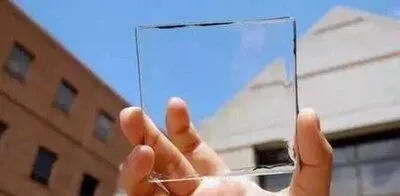
5. Top 10 brands ★ of glass
1. Xinyi Glass: Created inIn 1988, the world's leading integrated glass manufacturer, committed to the production of high-quality float glass, automotive glass, energy-saving architectural glass and other products, was established in 2005It was listed on the main board of the Hong Kong Stock Exchange in February 2008.
2. CSG glassFounded in 1984, it is a listed company specializing in the production and sales of renewable energy products such as float glass, photovoltaic glass, electronic glass and display devices, solar energy and photovoltaic power plants。
3. Yaopi glass: Founded in 1983, the foreign partner is the global glass manufacturer Pilkington Company of the United Kingdom, committed to the research and development and manufacturing of high-performance, green and energy-saving, safe and environmentally friendly and renewable energy products. Provide customers with perfect glass integration solutions.
4. North glass glassFounded in 1995, it is a high-tech enterprise specializing in the research and development, design and manufacturing of glass deep processing equipment and glass deep processing products. Its products are distributed all over the country and exported to more than 100 countries and regions such as the United States, the United Kingdom, Germany, France, and Japan.
5. Taiwan Glass Group: Created inIn 1964, Taiwan, China, was an early manufacturer of coatings and low-E glass, a large-scale glass industry company integrating R&D, production and sales. In 1993, it invested in the construction of factories in mainland China, and up to now, it has established a number of subsidiaries in mainland China.
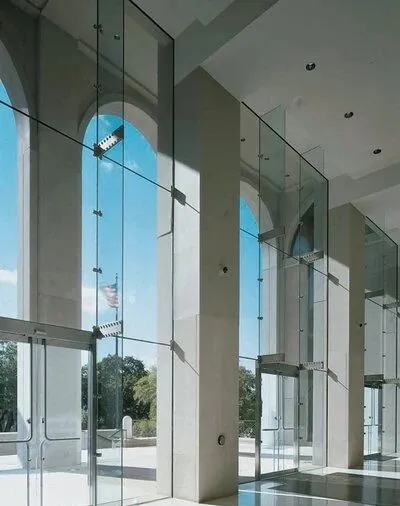
6. Flag Binding KIBINGFounded in 1988, it is a large-scale modern enterprise integrating float glass, energy-saving architectural glass, low-iron ultra-white glass, photovoltaic photovoltaic glass, electronic glass, and pharmaceutical glass R&D, production, and salesAn innovative energy-saving glass enterprise with full coverage of Low-E products, committed to providing one-stop glass products and technical solutions.
7. New Fuxing: New Fuxing glass began withIn 1980, it was a high-tech enterprise focusing on glass deep processing research and development, production and sales, involving silicon technology, white float, electronic glass, solar photovoltaic glass, architectural glass, special glass, home glass, power station operation, etc., with industries all over the country, and its products sell well at home and abroad.
8. Jinjing G-CRYSTALFounded in 1904, Jinjing Group is a national high-tech enterprise in the field of new solar energy materials and energy-saving new materials.
9. Haikong Special Glass: belongs to Haikong Nanhai Group, A large-scale modern enterprise specializing in the research and development, production and sales of building safety and energy-saving glass and special glass. Produce a full range of architectural glass products such as LOW-E glass, temperable glass, laminated glass, coated glass, insulating glass, and fireproof glass.
10. China Glass CNG: Founded in 2004, China Glass Holdings is a professional flat glass manufacturer under China National Building Materials Group, a benchmark for online coated glass technology research and development, products covering colorless transparent glass, body tinted glass, home appliance glass, medical glass, automotive glass, etc., and the products are exported to more than 90 countries and regions around the world. It is widely used in major landmark buildings at home and abroad.
6. Glass market prospects and development trends ★
As an important industrial and building material, glass has a wide range of applications and broad market prospects, showing the following development trends:
1. Market prospects in the field of construction
(1) Global urbanization has promoted the increase in new buildings and facilities, and the demand for energy-saving, safety and decorative glass is strong, taking into account both aesthetic and environmental safety standards
(2) Automotive field: Traditional and new energy vehicles rely on glass such as windows and sunroofs, and new energy vehicles have given rise to the demand for smart glass such as lightweight and adjustable transparency
(3) Electronic information field: consumer electronics update drives the demand for display glass, and the development of the photovoltaic industry has made the demand for photovoltaic glass (a key component of photovoltaic power generation) continue to rise
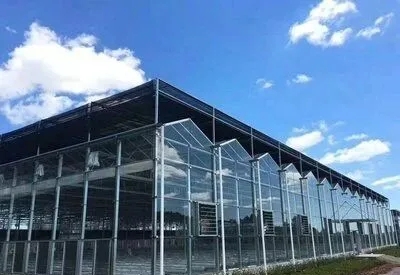
. Development trend: energy conservation and environmental protection
(1) Energy-saving glass (such as low-E glass, insulating glass) is the focus, and the production side optimizes the process to reduce energy consumption and emissions, and improve the glass recycling rate.
(2) Intelligent functionalization: Functional glass such as self-cleaning, power generation (photovoltaic glass), and adjustable transparency emerge to meet the needs of high quality and high efficiency.
(3) High-end customization: The demand for high-end products such as ultra-white glass and high-end art glass has grown, and customized products are favored to adapt to personalized scenarios.
(4) Technological innovation: optimize float and other production technologies to improve glass quality, develop new glass such as high temperature resistance and high strength, and expand application fields.
Name: Litong Glass
Mobile:+86 16632961602
Tel:+86 16632961602
Email:vip@litongglass.com
Add:Shahe city,Hebei,China